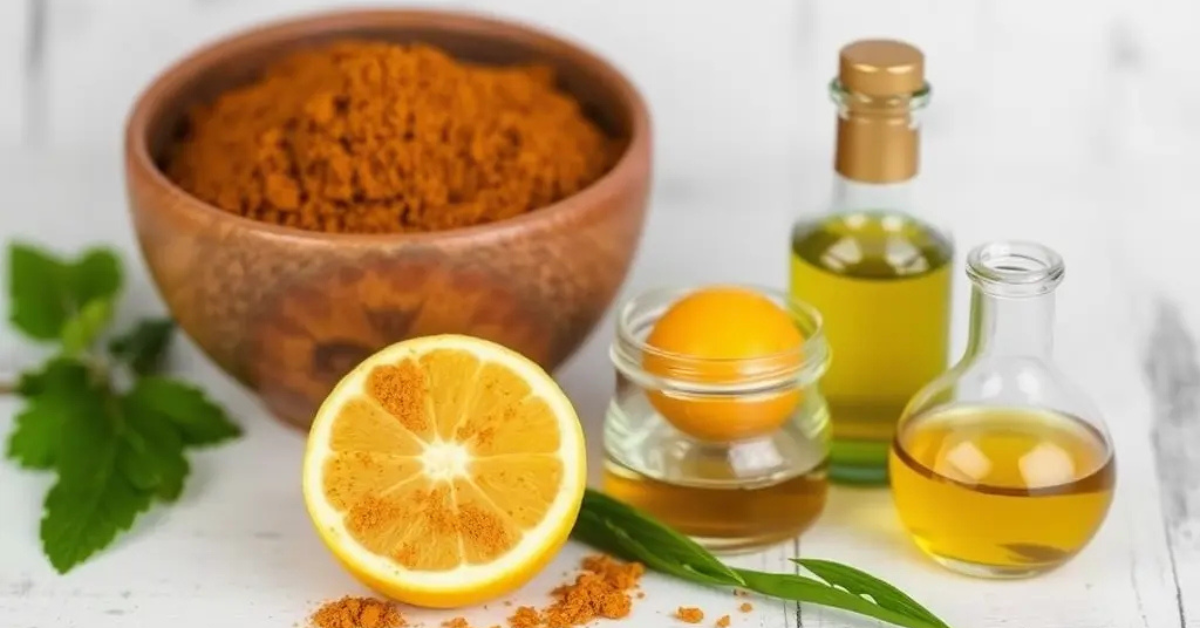Natural Hair Color: 7 Best DIY Recipes for Gorgeous Results
Are you tired of harsh chemicals damaging your hair every time you color it? Natural Hair Color alternatives are gaining popularity as more people seek healthier ways to enhance their appearance without compromising hair health. With growing concerns about chemical exposure and increasing interest in sustainable beauty practices, DIY natural hair coloring methods offer an effective and gentle alternative to commercial dyes.
Table of Contents
Why Choose Natural Hair Color Options?
Commercial hair dyes often contain potentially harmful chemicals like ammonia, paraphenylenediamine (PPD), resorcinol, and hydrogen peroxide. These chemicals can cause scalp irritation, allergic reactions, hair brittleness, and over time, may contribute to more serious health concerns.
Natural Hair Color alternatives provide several advantages:
- Gentler on hair and scalp: Natural ingredients nourish rather than strip your hair
- Environmentally friendly: Less chemical runoff into water systems
- Customizable intensity: Build color gradually for personalized results
- Hair health benefits: Many natural colorants also condition and strengthen hair
- Cost-effective: Most ingredients are affordable and readily available
According to a recent consumer survey, over 60% of people who switched to Natural Hair Color methods reported improved hair texture and reduced scalp irritation within just one month.
related post you may like: Guide on Identifying Your Skin Type
7 Powerful DIY Natural Hair Color Recipes
1. Henna for Vibrant Red to Brown Shades
Henna is perhaps the most well-known Natural Hair Dye, used for thousands of years across many cultures. This plant-based powder creates stunning red-orange tones while conditioning hair.

What you’ll need:
- 100g pure henna powder
- 2 cups hot water
- 1 tablespoon lemon juice
- 1 tablespoon olive oil
How to apply:
- Mix henna powder with hot water until smooth
- Add lemon juice to release dye and olive oil for conditioning
- Let the mixture sit for 12 hours to develop
- Apply to clean, damp hair and cover with a shower cap
- Leave on for 2-4 hours (longer for deeper color)
- Rinse thoroughly until water runs clear
For deeper auburn or brown tones, you can add 2 tablespoons of coffee grounds or black tea to your henna mixture. The natural tannins darken the result while maintaining the conditioning benefits of this Organic Hair Coloring option.
2. Coffee for Rich Brown Enhancement
Coffee makes an excellent Natural Hair Dye Recipe for darkening hair and adding rich dimension to brown shades. The caffeine can also stimulate hair follicles and promote growth.
What you’ll need:
- 2 cups strongly brewed coffee, cooled
- 2 tablespoons coffee grounds
- 1 cup leave-in conditioner
How to apply:
- Mix cooled coffee with grounds and conditioner
- Apply to clean, damp hair, focusing on roots first
- Cover with a shower cap and leave for 1 hour
- For deeper color, repeat applications over several days
- Rinse with cool water (avoid shampooing for 24 hours)
This Healthy Hair Color solution works gradually, making it perfect for those wanting subtle enhancement. For increased intensity, repeat applications weekly until you achieve your desired shade.
3. Chamomile and Lemon for Natural Highlights
Looking to brighten blonde hair or add subtle highlights? This chamomile and lemon mixture provides gentle lightening effects using completely natural ingredients.
What you’ll need:
- 5 chamomile tea bags
- 1 lemon, juiced
- 2 tablespoons honey
- 1 tablespoon olive oil
How to apply:
- Steep tea bags in 2 cups of hot water for 30 minutes
- Remove bags and add lemon juice, honey, and olive oil
- Transfer mixture to a spray bottle
- Spray generously on damp hair
- Sit in sunlight for 1-2 hours with hair uncovered
- Rinse and condition as usual
This Natural Hair Color solution works progressively, so multiple applications will yield more noticeable results. The honey and olive oil help counteract the drying effects of lemon, making this a Healthy Hair Color option even for those with sensitive hair.
4. Black Tea for Darkening and Shine
Black tea is excellent for darkening hair while adding remarkable shine. The tannins in tea bind to hair, creating temporary color enhancement that builds with repeated use.
What you’ll need:
- 5 black tea bags or 3 tablespoons loose black tea
- 2 cups boiling water
- 1 tablespoon rosemary (optional, for added darkening)
How to apply:
- Steep tea in boiling water for at least 30 minutes (stronger is better)
- Cool completely
- Pour over clean, shampooed hair in the shower, saturating completely
- Do not rinse out
- Repeat daily for one week for noticeable results
This Organic Hair Coloring method is particularly effective for covering early grays and works well for most brunette shades. The antioxidants in black tea also help reduce hair shedding and promote a healthy scalp.
5. Beet and Carrot Juice for Red Tones
For those seeking vibrant reddish tints, this beet and carrot juice combination delivers beautiful results while nourishing your hair with vitamins and minerals.
What you’ll need:
- 2 large beets
- 3 large carrots
- 2 tablespoons coconut oil
How to apply:
- Juice the beets and carrots (or use pre-made juice)
- Mix with coconut oil
- Apply to clean, dry hair from roots to tips
- Cover with a shower cap and leave on for at least 1 hour
- Rinse thoroughly and style as usual
This Natural Hair Dye Recipe creates a temporary color that will gradually fade with washing. The intensity depends on your natural hair color – blonde hair will show more vibrant results, while darker hair will display subtle reddish highlights.
6. Walnut Shells for Deep Brown to Black
Walnut shells create one of the most long-lasting Natural Hair Color solutions for achieving dark brown to black shades. The resulting dye penetrates hair cuticles for extended wear.
What you’ll need:
- 2 cups crushed walnut shells or 7 tablespoons walnut powder
- 4 cups water
- 1 tablespoon cloves (optional, for darker results)
How to apply:
- Simmer crushed walnut shells in water for 30 minutes
- Strain and cool the liquid
- Apply to clean hair with an applicator brush
- Cover with a shower cap and leave for at least 3 hours
- Rinse thoroughly (wear gloves as this will stain hands)
This DIY Hair Dye creates rich, warm brown tones that can last for several weeks. Note that walnut can cause allergic reactions in some individuals, so always perform a patch test before full application.
7. Sage for Gray Coverage and Green Undertones
Sage is particularly effective for darkening gray hair and adding subtle green undertones to darker hair colors. It works gradually and is perfect for those wanting a gentle transition.
What you’ll need:
- 1/2 cup dried sage leaves
- 2 cups water
- 2 tablespoons apple cider vinegar
How to apply:
- Simmer sage in water for 30 minutes
- Cool and strain the liquid
- Add apple cider vinegar
- Pour over hair as a final rinse after shampooing
- Do not rinse out
- Repeat 2-3 times weekly for best results
This Healthy Hair Color option doubles as a conditioning treatment, adding shine while gradually darkening hair. For enhanced results, some users combine sage with black tea or coffee for deeper coloration.
Tips for Natural Hair Coloring Success
To get the most from your Natural Hair Color treatments:
- Test first: Always do a strand test to check the color result
- Prepare your hair: Use clarifying shampoo before application to remove buildup
- Protect your surroundings: Natural dyes can stain surfaces and fabrics
- Be patient: Natural colors develop more slowly than chemical dyes
- Maintenance matters: Regular applications will maintain and deepen color
- Timing is key: Leaving mixtures on longer generally results in deeper color
- Consider your base: Your natural color affects the final result
| Hair Type | Best Natural Colorants | Expected Results |
| Blonde | Chamomile, Lemon, Honey | Golden highlights, subtle lightening |
| Light Brown | Henna, Rhubarb Root | Reddish to copper tones |
| Medium Brown | Coffee, Black Tea, Walnut | Deeper brown, added dimension |
| Dark Brown/Black | Indigo, Walnut Shells | Blue-black to deep brown tones |
| Red | Beet Juice, Hibiscus, Henna | Enhanced red tones, vibrant refresh |
| Gray | Sage, Coffee, Black Tea | Darkening, reduced gray appearance |
Frequently Asked Questions About Natural Hair Color
How long do natural hair colors last?
Unlike chemical dyes that typically last 4-6 weeks, Natural Hair Color treatments vary in longevity. Henna and walnut-based dyes tend to last longest (3-5 weeks), while fruit and tea-based colors may last only 1-2 weeks. Regular application builds up color over time, resulting in more lasting effects. To maintain your desired shade, plan on reapplying every 1-3 weeks depending on which natural colorant you choose.
Will natural dyes completely cover gray hair?
Natural Hair Dye options vary in their ability to cover gray hair. Henna and walnut shells provide the most effective gray coverage, while herbs like sage work more gradually. For stubborn grays, combining methods often works best—for example, using a coffee rinse followed by henna treatment. Multiple applications are typically necessary for full coverage, but the health benefits to your hair make the patience worthwhile.
Can I use natural colors after chemical processing?
If you’re transitioning from chemical dyes to Organic Hair Coloring methods, it’s important to wait at least two weeks after your last chemical process. Natural dyes like henna can react unpredictably with chemical residues, potentially causing green or purple tints. For previously bleached hair, start with conditioning treatments for a few weeks before applying natural colors. When you do begin, test on a small section first to ensure the results are what you expect.
What’s the best way to maintain natural hair color?
To extend the life of your Natural Hair Color:
- Wash hair less frequently using sulfate-free shampoos
- Rinse with cool water instead of hot
- Protect hair from excessive sun exposure
- Use color-depositing natural rinses between full treatments
- Apply natural oils like coconut or argan to seal the cuticle
- Avoid chlorinated pools or wear a swim cap
Following these maintenance tips can significantly extend the vibrancy of your natural color while continuing to improve your hair’s overall health.
Conclusion: Embrace the Beauty of Natural Hair Color
Natural Hair Color methods offer a wonderful alternative to harsh chemical dyes, providing beautiful results while simultaneously improving hair health. Whether you’re looking to cover grays, add subtle highlights, or completely transform your look, there’s a natural solution that can work for you.
By incorporating these DIY Hair Dye recipes into your beauty routine, you’re not only creating gorgeous color results but also participating in a sustainable approach to personal care. The ingredients used in these Natural Hair Dye Recipes have been trusted for generations, long before commercial dyes dominated the market.
Have you tried any natural coloring methods? We’d love to hear about your experiences in the comments below! Share your favorite recipes, tips, or before-and-after results to inspire others on their natural hair color journey.
Remember that patience is key with Natural Hair Color – the gradual process and nourishing ingredients are worth the wait for beautiful, healthy results that improve your hair with each application.
Any other feedback or suggestions?
There are no reviews yet. Be the first one to write one.







